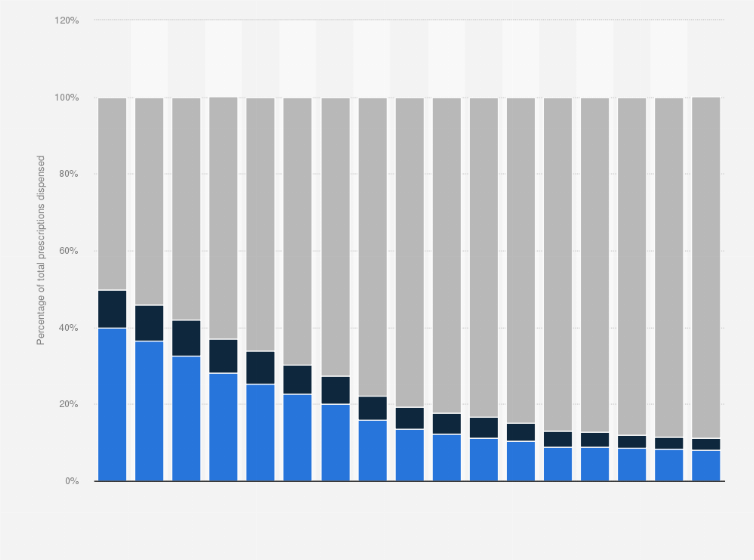
Branded vs. generic U.S. drug prescriptions dispensed 2020-2023
The proportion of branded to generic drug prescriptions dispensed in the U.S. was relatively stable over the last four years. In general, prescriptions for branded drugs make up between eight and nine percent of all prescriptions dispensed in the United States.
What are generics?
Generic medications are drugs created with the same ingredients as brand-name drugs, but are not created under the umbrella of a brand. They are made to work the same way that brand-name drugs work, but are often cheaper. The top generic drug companies in the U.S. include Teva, Mylan and Sandoz (formerly part of Novartis). Generic drugs provide a large proportion of all pharmaceuticals dispensed. Among all pharmaceutical products dispensed in the U.S., levothyroxine, a drug used to treat hypothyroidism, is among the top drugs based on number of prescriptions dispensed.
Cost savings through generics
Generic drugs provide immense savings to consumers in the United States. The amount of money saved by the U.S. health system through generic usage has more than doubled since 2015. Direct savings for consumers depends on the payer. Commercial insurance coverage had the highest degree of cost savings in the U.S. and those that paid out-of-pocket had the lowest savings in 2023. However, branded drugs still account for nearly 86 percent of total U.S. Rx drug spending.











